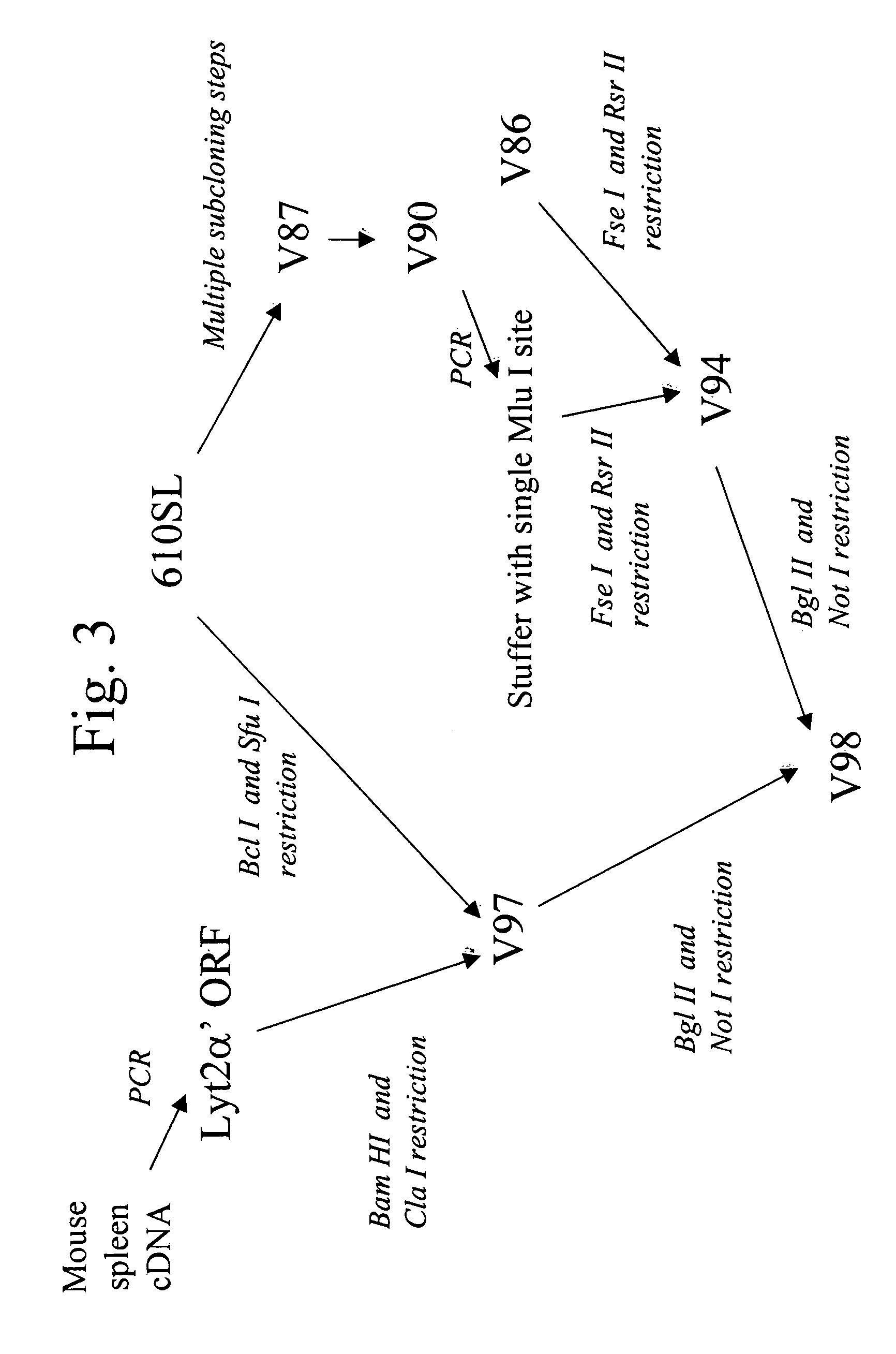Targets for controlling cellular growth and for diagnostic methods
a technology of cellular growth and target, applied in the direction of instruments, biochemistry apparatus and processes, measurement devices, etc., can solve the problems of uncontrolled cell growth and tumor formation, and achieve the effects of reducing the expression of the target, determining the prognosis of cancer in the patient, and reducing the activity of the targ
- Summary
- Abstract
- Description
- Claims
- Application Information
AI Technical Summary
Benefits of technology
Problems solved by technology
Method used
Image
Examples
example 1
[0124] The purpose of this experiment was to perform a nearly saturated genome wide GSE screen in a tumor cell line model for GSEs that protect cells against apoptosis.
[0125] 1. V98 Vector Design and Construction
[0126] Vector V98 was created through modification of p610SL, a derivative of pLNCO3 (B -D Chang and I. B. Roninson, Gene 183 (1996) 137-142.) A schematic of V98 is shown in FIG. 1. The region flanking the multiple cloning site (MCS) downstream of the inducible CMV promoter was re-engineered (1) to introduce restriction endonuclease sites for enzymes expected to occur with low frequency in the human genome [e.g., Fse I (1 per 170 kBp), Mlu I (1 per 300 kBp), and Rsr II (1 per 260 kBp)], (2) to introduce a short sequence of nucleic acid containing stop codons in all three DNA reading frames downstream of the MCS, (3) to introduce between the Fse I and Mlu I sites on the re-engineered vector backbone a Kozak sequence for efficient translation initiation of peptides encoded b...
PUM
| Property | Measurement | Unit |
|---|---|---|
| temperature | aaaaa | aaaaa |
| pH | aaaaa | aaaaa |
| temperature | aaaaa | aaaaa |
Abstract
Description
Claims
Application Information
 Login to View More
Login to View More - R&D
- Intellectual Property
- Life Sciences
- Materials
- Tech Scout
- Unparalleled Data Quality
- Higher Quality Content
- 60% Fewer Hallucinations
Browse by: Latest US Patents, China's latest patents, Technical Efficacy Thesaurus, Application Domain, Technology Topic, Popular Technical Reports.
© 2025 PatSnap. All rights reserved.Legal|Privacy policy|Modern Slavery Act Transparency Statement|Sitemap|About US| Contact US: help@patsnap.com



